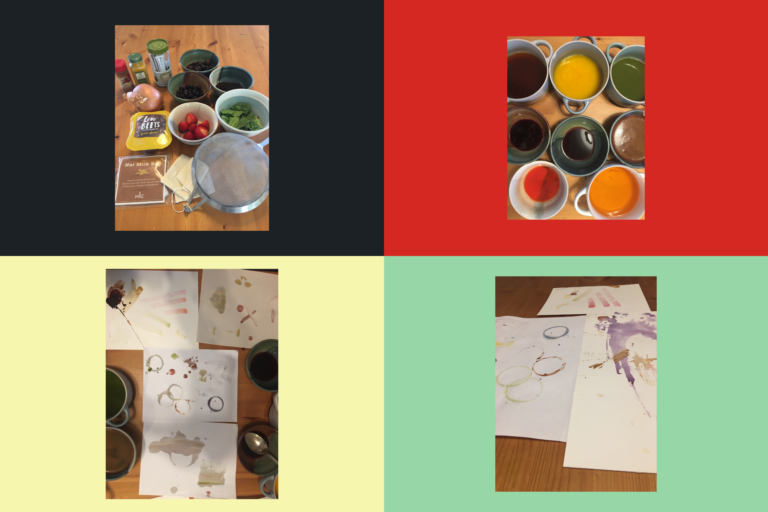Did you know April 11 – 17 is Week of the Young Child, the National Association for the Education of Young Children’s (NAEYC) week-long celebration of our youngest learners? Each day has a different theme, and today’s theme is Artsy Thursday. For Artsy Thursday, our gallery educator Allyson put together a list of art activities that you can do at home with minimal supplies and with babies, toddlers, and older children. Look, experiment, explore, make, and have fun! Share your artwork with us on Facebook, Instagram, or Twitter and include #StillInspired. We can’t wait to see what you create!

Make a Museum
We all have collections of items, whether we recognize them as collections or not. Look for objects inside or outside of your home. Maybe they are stuffed animals, bouncy balls, seashells, plastic animals, vacation memorabilia, dolls, or acorns. The possibilities are limitless.
Discover a new way to organize your collection. Do you sort by color, size, shape, style? Where do you display your collection? Take photos or make drawings of your display. Talk about all the different ways the collection could be displayed.
Add On Activity: Label each item or grouping with the artist name (that is you), a title for the collection, and possibly a description of the collection.
Materials Needed: Items from inside the home or things that you find outside.

Movement
Stand in front of an artwork (could be a photograph, poster, painting, postcard, or drawing). Spend a couple of minutes looking closely at the object. How does the art look if you are viewing it from the side or even upside down? Imagine if that artwork were in the form of a statue. How would it look? Move your body how you think the statue of your art might look. Imagine if the statue could move or come to life. How would it move? Move your body in the way you think the art might move, whether it is standing, sitting, leaning still, or moving. Have fun with this and make it into a live performance by clapping for each participant.
Add On: Add scarves or lightweight fabric to your movements. Have a conversation about how the fabric might move with the artwork. Is it still or is there movement? If there is movement, in which direction does it move? Is it vertical or horizontal? Or is it diagonal?

Materials Needed: Art in your home or the images shown below from the Clyfford Still Museum.
Make a Painting
Materials Needed: Paper, paintbrushes (can substitute anything with bristles- toothbrushes, basting brushes or cotton balls) and materials for watercolor paints:
- Any of these items will extract color: powdered paprika, powdered turmeric, tea bags, coffee grounds, beets, red cabbage, onion skins, berries (if berries are frozen let them thaw and the juice will naturally separate), cacao/cocoa powder, green smoothie mix, spinach leaves.
(Feel free to substitute and experiment with what you have readily available in your refrigerator and pantry.)
- Hot water to add to items that do not have juice (powdered herbs, tea bags, coffee grounds, beets, red cabbage, and onion skins. Only add enough to cover. If too much hot water is added the color becomes diluted).
- Sieve/fine strainer or cheesecloth (feel free to substitute) or porous fabric to grind and mash the berries, spinach, and cabbage for more juice/color.
- Cups or bowls for mixing or jars for storing.
Add On: To make a print or pattern, use toilet paper or paper towel rolls and dip the ends in paints, or cut into segments so you have as many circles.
